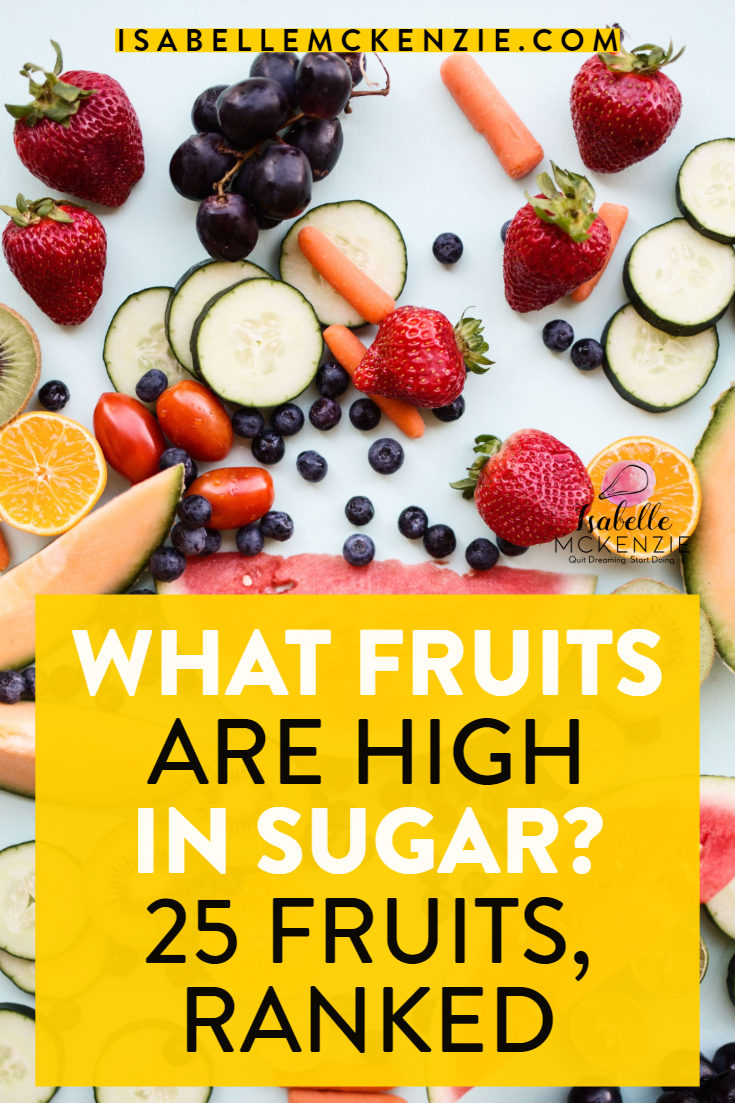Discover Fruits High in Sugar

Think you know your sugar fruit diet? Fruits are generally touted as nature's candy, packed with essential vitamins, minerals, and fiber. But did you ever pause to think which fruits have the most sugar? Understanding the sugar content in fruit is crucial, especially for those watching their sugar intake. Let's dive into the fascinating world of high sugar fruits and help you navigate your sugar levels in fruit effectively!
Why Sugar Content in Fruit Matters
Fruits are a vital part of a healthy diet. They provide essential nutrients and help in maintaining overall health. However, knowing the sugar levels in fruit can be a game-changer, especially if you're managing conditions like diabetes or simply aiming for a low sugar diet. While natural sugars in fruits are different from added sugars found in processed foods, they still contribute to your overall sugar intake.
The Dangers of High Sugar Intake
Consuming too much sugar, even from natural sources like fruit, can lead to various health issues. Excessive sugar can increase the risk of obesity, heart disease, and even type 2 diabetes. It's essential to strike a balance and be aware of the sugar content in your diet. So, which fruits should you watch out for when considering a sugar fruit diet?
The Fruit Standout: High Sugar Fruits to Know
The Sweet Spot: Naturally High Sugar Fruits
Some fruits stand out for their high sugar content. Bananas, for instance, are a great source of potassium but also pack a hefty serving of sugar. A medium-sized banana can have around 14-17 grams of sugar.
Grapes are another sweet culprit. These tiny fruits can add up quickly in terms of sugar. A cup of grapes contains about 23 grams of sugar.
And who can forget mangoes? These tropical delights are rich in antioxidants but also high in sugar, with around 24 grams of sugar per cup.
Let's not forget about dried fruits like raisins, dates, and prunes. These are concentrated forms of sugar, with some dried fruits containing as much as 30-40 grams of sugar per half cup. They're like the ultimate power-source snacks.
Balancing Act: Low Sugar Fruits for Your Diet
If you're watching your sugar intake, it's also essential to know which fruits are low in sugar. Berries, for example, are a fantastic choice. Strawberries, blueberries, and raspberries have a lot of flavor but relatively low sugar content—around 4-7 grams per cup.
Melons, like watermelon and cantaloupe, offer a refreshing, low-sugar option. A cup of watermelon has about 9 grams of sugar, making it a refreshing and lighter option compared to other fruits.
Lastly, citrus fruits like oranges and grapefruits are excellent choices. They are rich in vitamin C and have around 9-12 grams of sugar per fruit, offering a tangy and nutritious option.
The Secret to a Healthier Sugar Fruit Diet
So, how can you enjoy fruits without overloading on sugar? The key is moderation and variety. Mixing high sugar fruits with low sugar fruits can help you maintain a balanced diet. Imagine your meal plan as a colorful fruit salad, with a mix of sweet and tangy flavors. This way, you get the best of both worlds—tasty and nutritious!
Another tip is to pair fruits with proteins or healthy fats. Eating an apple with a tablespoon of almond butter or pairing berries with Greek yogurt can slow down sugar absorption, keeping your blood sugar levels in check.
Making Informed Choices
Knowing which fruits have the most sugar is just the first step. By understanding the sugar content in fruit, you can make informed choices that support your health goals. Whether you're managing a medical condition or simply aiming for a balanced diet, being aware of the sugar levels in fruit can make a significant difference.
Remember, the key is balance. Don't shy away from sweet fruits entirely; incorporate them into a varied diet that includes both high and low sugar fruits, paired with proteins and healthy fats.
So, are you ready to revamp your diet with this new knowledge on high sugar fruits and maintain your well being tactfully? Learn more about fruit sugar content and how to incorporate low sugar fruits into your diet to achieve optimal health.
Frequently Asked Questions
1. Which fruit has the highest sugar content?
Dried fruits like raisins, dates, and prunes typically have the highest sugar content among fruits, sometimes containing up to 30-40 grams of sugar per half cup.
2. How can I reduce my sugar intake from fruits?
To reduce your sugar intake from fruits, consider mixing high sugar fruits with low sugar fruits and pairing them with proteins or healthy fats to slow down sugar absorption.
3. Are all fruits high in sugar?
No, not all fruits are high in sugar. Berries, melons, and citrus fruits are examples of low sugar fruits that are nutritious and can be included in a sugar fruit diet.
4. Can I eat high sugar fruits if I have diabetes?
If you have diabetes, it's crucial to monitor your sugar intake, including from natural sources like fruits. However, you can still enjoy high sugar fruits in moderation and pair them with proteins or healthy fats.
5. Is the sugar in fruits different from added sugars?
Yes, the natural sugars in fruits come with fiber, vitamins, and minerals, making them a healthier option compared to added sugars found in processed foods. However, portion control is still essential to manage sugar levels in fruit.
```
0 Response to " Discover Fruits High in Sugar"
Post a Comment